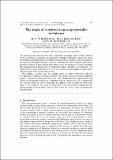Files in this item
The shape of vortices in quasi-geostrophic turbulence
Item metadata
| dc.contributor.author | Reinaud, Jean Noel | |
| dc.contributor.author | Dritschel, David Gerard | |
| dc.contributor.author | Koudella, CR | |
| dc.date.accessioned | 2010-12-01T13:07:04Z | |
| dc.date.available | 2010-12-01T13:07:04Z | |
| dc.date.issued | 2003-01-10 | |
| dc.identifier | 231391 | |
| dc.identifier | aa8612dd-669e-4954-bb40-475261a50d75 | |
| dc.identifier | 000182211800007 | |
| dc.identifier | 0037428355 | |
| dc.identifier.citation | Reinaud , J N , Dritschel , D G & Koudella , CR 2003 , ' The shape of vortices in quasi-geostrophic turbulence ' , Journal of Fluid Mechanics , vol. 474 , pp. 175-192 . https://doi.org/10.1017/S0022112002002719 | en |
| dc.identifier.issn | 0022-1120 | |
| dc.identifier.other | ORCID: /0000-0001-5449-6628/work/34852209 | |
| dc.identifier.other | ORCID: /0000-0001-6489-3395/work/64697737 | |
| dc.identifier.uri | https://hdl.handle.net/10023/1557 | |
| dc.description | Partially supported by the UK EPSRC (Grant GR/N11711) | en |
| dc.description.abstract | The present work discusses the most commonly occurring shape of the coherent vortical structures in rapidly rotating stably stratified turbulence, under the quasi-geostrophic approximation. In decaying turbulence, these vortices-coherent regions of the materially-invariant potential vorticity-dominate the flow evolution, and indeed the flow evolution is governed by their interactions. An analysis of several exceptionally high-resolution simulations of quasi-geostrophic turbulence is performed. The results indicate that the population of vortices exhibits a mean height-to-width aspect ratio less than unity, in fact close to 0.8. This finding is justified here by a simple model, in which vortices are taken to be ellipsoids of uniform potential vorticity. The model focuses on steady ellipsoids within a uniform background strain flow. This background flow approximates the effects of surrounding vortices in a turbulent flow on a given vortex. It is argued that the vortices which are able to withstand the highest levels of strain are those most likely to be found in the actual turbulent flow. Our calculations confirm that the optimal height-to-width aspect ratio is close to 0.8 for a wide range of background straining flows. | |
| dc.format.extent | 18 | |
| dc.format.extent | 1054317 | |
| dc.language.iso | eng | |
| dc.relation.ispartof | Journal of Fluid Mechanics | en |
| dc.subject | Ellipsoidal vortices | en |
| dc.subject | Stratified fluid | en |
| dc.subject | Vortex | en |
| dc.subject | Algorithm | en |
| dc.subject | Flows | en |
| dc.subject | QA Mathematics | en |
| dc.subject.lcc | QA | en |
| dc.title | The shape of vortices in quasi-geostrophic turbulence | en |
| dc.type | Journal article | en |
| dc.contributor.institution | University of St Andrews. Applied Mathematics | en |
| dc.identifier.doi | 10.1017/S0022112002002719 | |
| dc.description.status | Peer reviewed | en |
| dc.identifier.url | http://www.scopus.com/inward/record.url?scp=0037428355&partnerID=8YFLogxK | en |
This item appears in the following Collection(s)
Items in the St Andrews Research Repository are protected by copyright, with all rights reserved, unless otherwise indicated.

